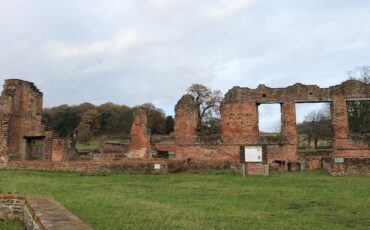Blue Badge Tourist Guides are used to standing in front of statues and telling their groups about the people portrayed in them. The subjects of these statues are far more likely to be men, with only about ten percent portraying women – and most of those are of royalty, such as Queen Victoria. Britain has produced a large number of successful female writers but there are very few monuments to commemorate them. There is none for the famous Bronte sisters, who created Jane Eyre and Wuthering Heights, nor for the ever-popular Jane Austen, although you can see her on the back of the ten-pound note. There is a monument to Agatha Christie near where her record-breaking play The Mousetrap is now entering its sixty-seventh year but the only woman writer with a full statue erected in her memory is the novelist George Eliot, who felt it necessary to take a man’s name to be published. This stands in the centre of the market town Nuneaton, where she was born 200 years ago this month.

George Eliot Statue in Nuneaton. Photo Credit: © Edwin Lerner.
Who Was George Eliot
George Eliot was born Mary Ann Evans, the daughter of Robert Evans, a one-time farmer and land agent who later inspired characters such as Mister Tulliver in The Mill on the Floss and Mister Garth in Middlemarch, which many consider the finest novel written in the English language, a “novel for grown-ups” as Virginia Woolf called it. A plain but intelligent and independent girl, she was not expected to marry and, after her mother’s death, she acted as companion and housekeeper to her father. However, the religious doubts she had begun to entertain were not tolerated and he threatened to throw her out of the house if she did not go to church. This was not to be the first time that there was a conflict between new intellectual ideas and the values of her conservative background – in both her life and her writing.
After her father’s death, she moved to London, changed her first name to Marian and edited the Westminster Review magazine. After an unsatisfactory love affair with the magazine’s married owner John Chapman, she set up home with the philosopher and critic George Lewes who encouraged her to write novels. Mary Ann Evans did this under the name George Eliot, feeling that her books would be taken more seriously if people thought they were written by a man.

George Eliot Hotel sign in Nuneaton. Photo Credit: © Edwin Lerner.
Her stories won many admirers, including Charles Dickens, who correctly guessed that the novelist who wrote them was a woman. Her irregular domestic arrangements, however, meant that she was not admitted into respectable Victorian society. Although they were soul mates and companions until Lewes’s death in 1878, he was already married when they met and so their relationship was never formalised, although she always described him as her husband.
Her beloved brother Isaac broke off all contact with her once she started living with a married man but he relented when she married John Cross, a man twenty years her junior, in 1880 two years after Lewes’s death. This marriage was not a success, however, and Cross attempted suicide on their honeymoon in Venice. She died later that year and was buried next to Lewes in Highgate Cemetery.

George Eliot painting. Photo Credit: © Edwin Lerner.







Leave a Reply